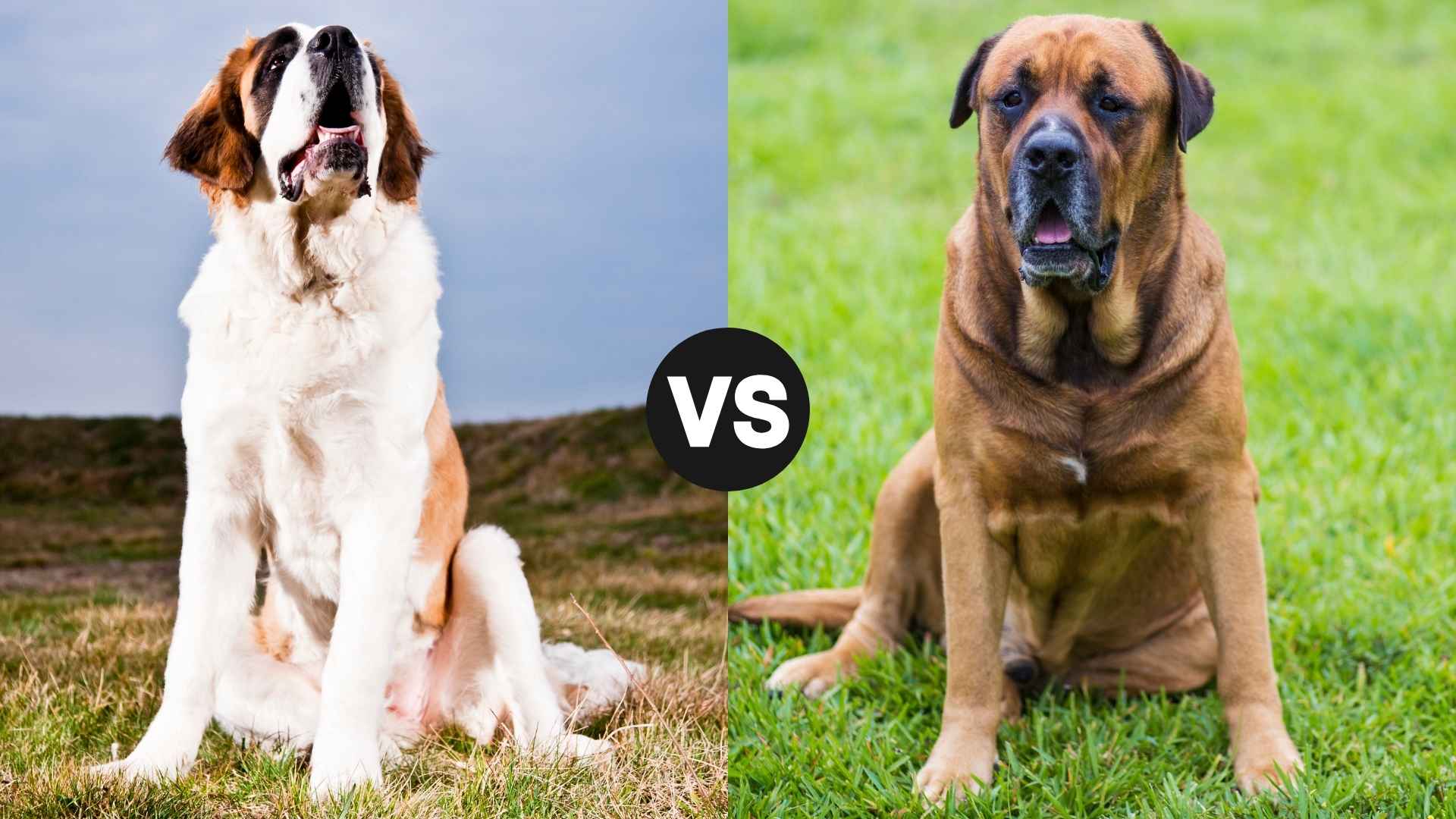When it comes to giant dog breeds, Saint Bernard vs Mastiff is a comparison that often sparks interest among dog lovers. These colossal canines are not only eye-catching due to their sheer size but also adored for their gentle nature and fierce loyalty. Both breeds have a calm temperament and a protective instinct, making them wonderful companions for the right household.
However, despite these shared traits, they differ in several key areas—including size, energy levels, grooming needs, and trainability. Whether you’re looking for a drool-prone cuddle buddy or a steadfast guardian for family, understanding the nuances of each breed is essential.
In this guide, we’ll explore the similarities and differences between Saint Bernard and the Mastiff, helping you determine which large breed better aligns with your lifestyle, space, and experience level. Let’s dive in and discover what sets these two gentle giants apart—and which might just steal your heart.
Saint Bernard vs. Mastiff
When comparing Saint Bernard vs Mastiff, both breeds stand out for their impressive size, gentle temperament, and long-standing history as working dogs. Saint Bernards trace their origins to the Swiss Alps, where monks created Bernard Hospice and trained these big dogs to locate and rescue avalanche victims. Known for their devotion and affectionate nature, Saint Bernards have evolved into beloved family pets, especially praised for their patience with children.
Barry, the most renowned hospice dog, is credited with saving around 40 lives between 1800 and 1814, inspiring the Swiss nickname “Barryhund” for Saint Bernards. Besides rescue work, Saint Bernards have also served as cattle, draft, and guard dogs, according to Britannica.
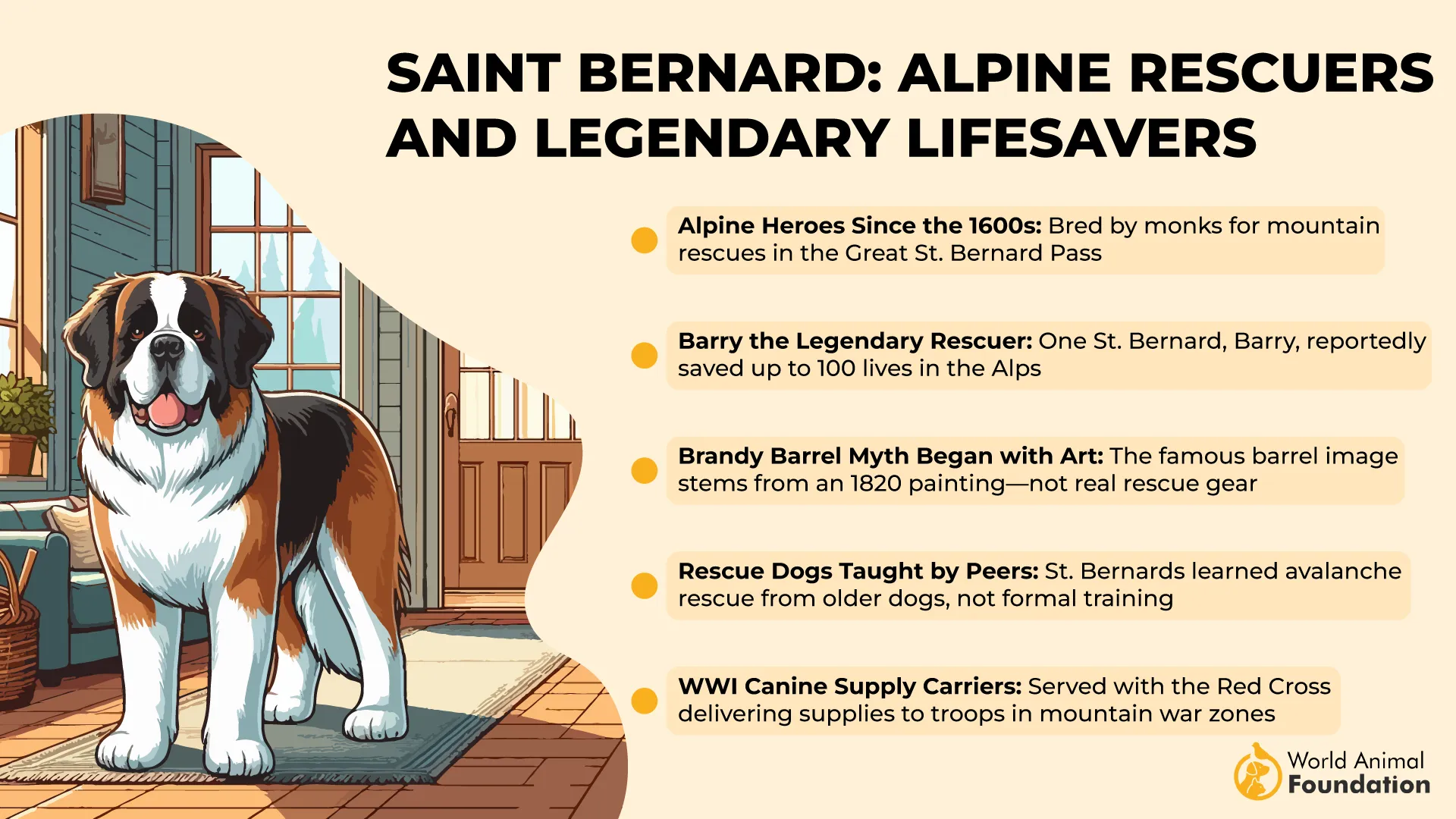
The Mastiff breed, often referred to as the Old English Mastiff, boasts an even older lineage, with records dating back to ancient civilizations. First recognized in Britain during Roman invasions and later brought to North America on the Mayflower, Mastiffs were bred as hunters and guardians.
Despite their imposing build, Mastiffs are docile and good-natured, forming strong bonds with their family members. With minimal grooming needs and a protective yet mellow nature, they remain one of the most dignified and loyal working breeds today.
Size and Physical Dimensions
When it comes to size and physical dimensions, both the Saint Bernard and the Mastiff are true giants of the dog world, though they differ slightly in build and appearance. Saint Bernards typically weigh between 120 to 180 pounds, with males standing at a minimum of 27.5 inches tall and females slightly smaller and more refined.
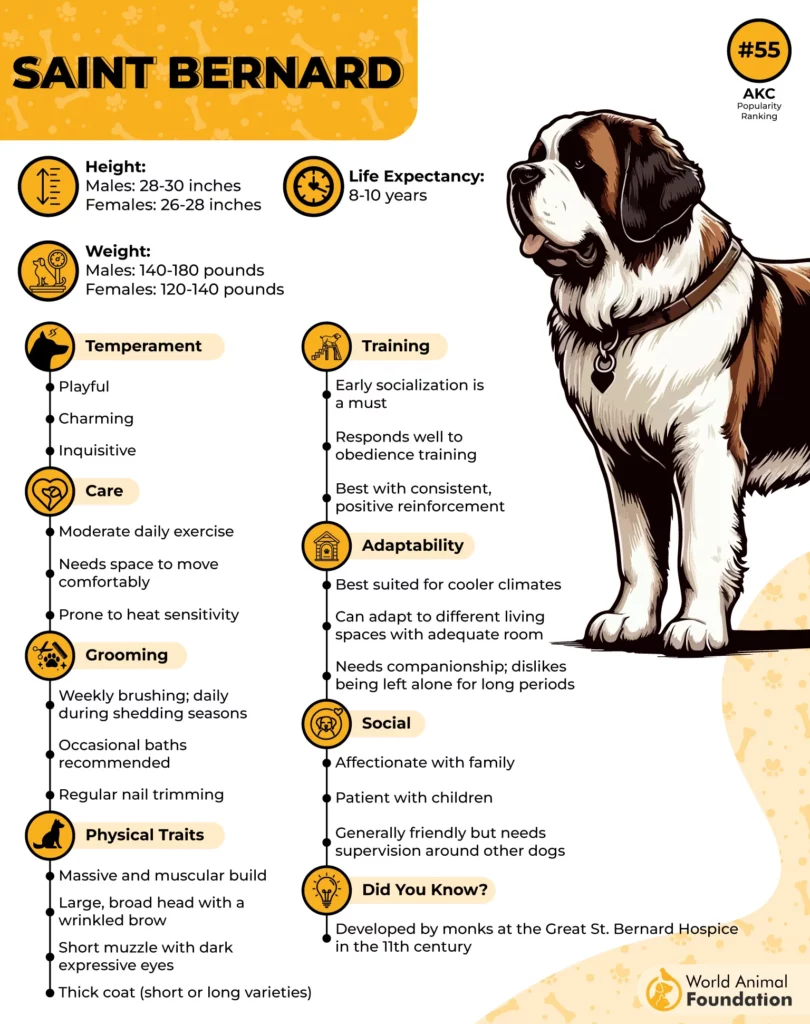
The breed standard by the American Kennel Club (AKC) abounds with phrases like “very powerful,” “extraordinarily muscular,” “imposing,” and “massive.” Their massive heads, wrinkled brows, and soulful, dark eyes radiate strength and friendliness, traits that once brought comfort to stranded travelers in the Alps.
Mastiffs, on the other hand, tend to be even more robust in stature. Adult Mastiffs often exceed 27.5 inches in height, with many males reaching 30 inches or more. Their weight ranges widely from 120 to a staggering 230 pounds, making them one of the heaviest dog breeds.
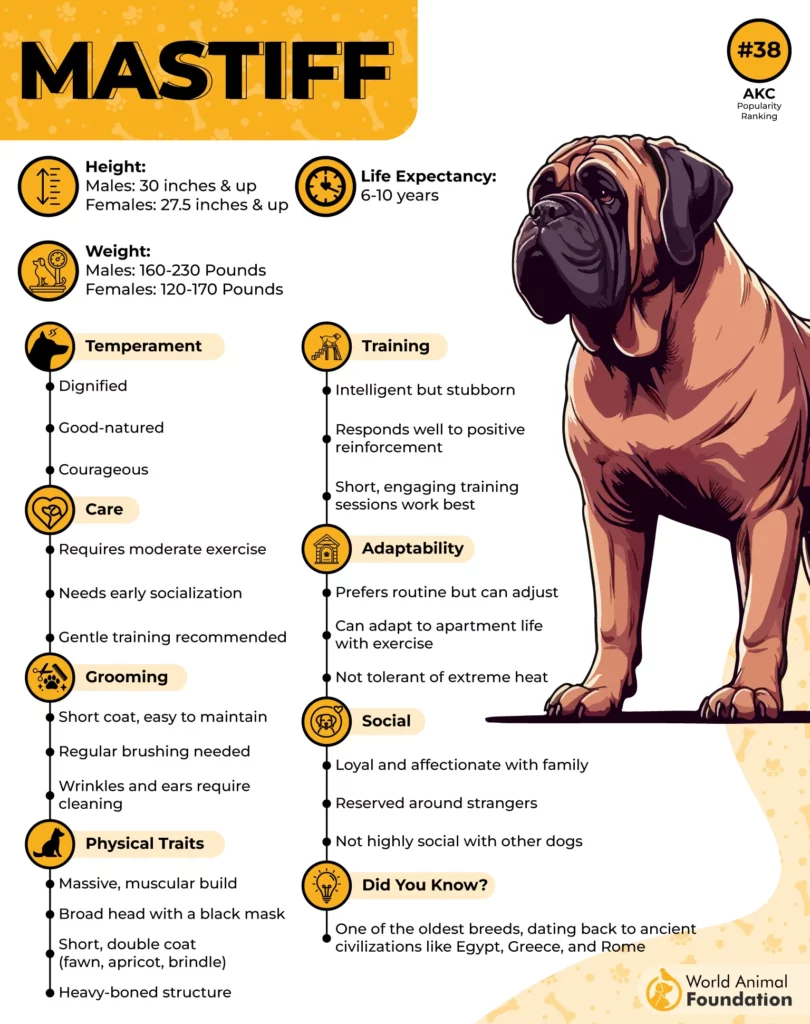
While their thick, muscular bodies give them a formidable presence, their broad chest, facial folds, wrinkled faces, and gentle eyes reveal a soft-hearted and affectionate companion underneath all that bulk.
Temperament and Personality Traits
In terms of temperament and personality, Saint Bernards are known for their calm, affectionate, and easygoing nature. These gentle giants are devoted family companions who thrive on love and attention. While they’re generally friendly toward strangers and get along well with other household pets, they may be cautious around unfamiliar dogs.
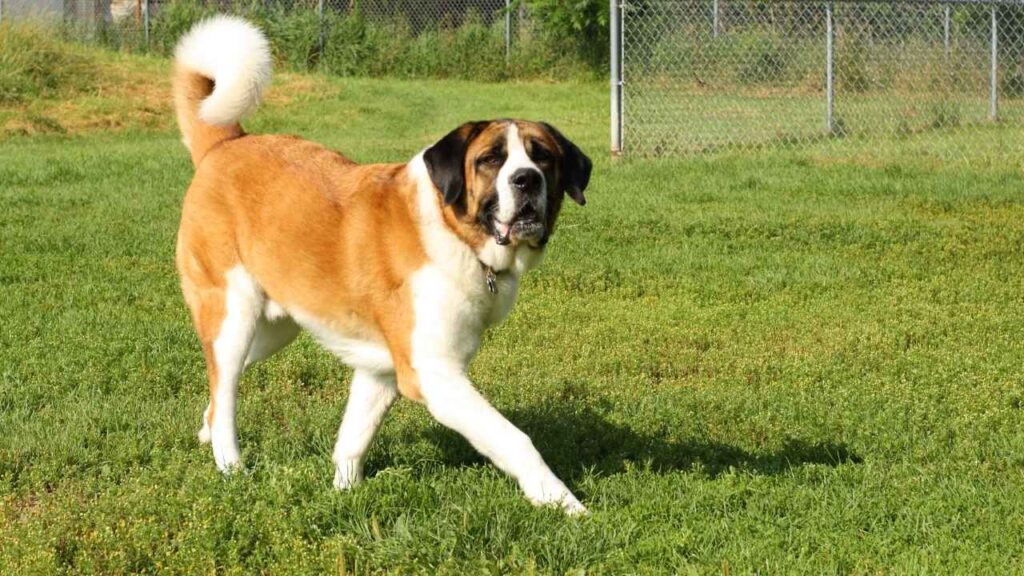
Saints are a low-energy breed. They prefer short play sessions, especially as adults. They aren’t ideal watchdogs, but their massive size and deep bark can deter potential intruders. However, their slow, methodical responses and limited heat tolerance make them better suited for cool climates and low-key households rather than active lifestyles.
Mastiffs, while equally calm and good-natured at home, have a stronger guarding instinct. Their protective nature kicks in quickly at the sight of anything unfamiliar, though they typically remain composed and quiet. Socialization from a young age is key to preventing over-guarding or suspicion toward strangers.
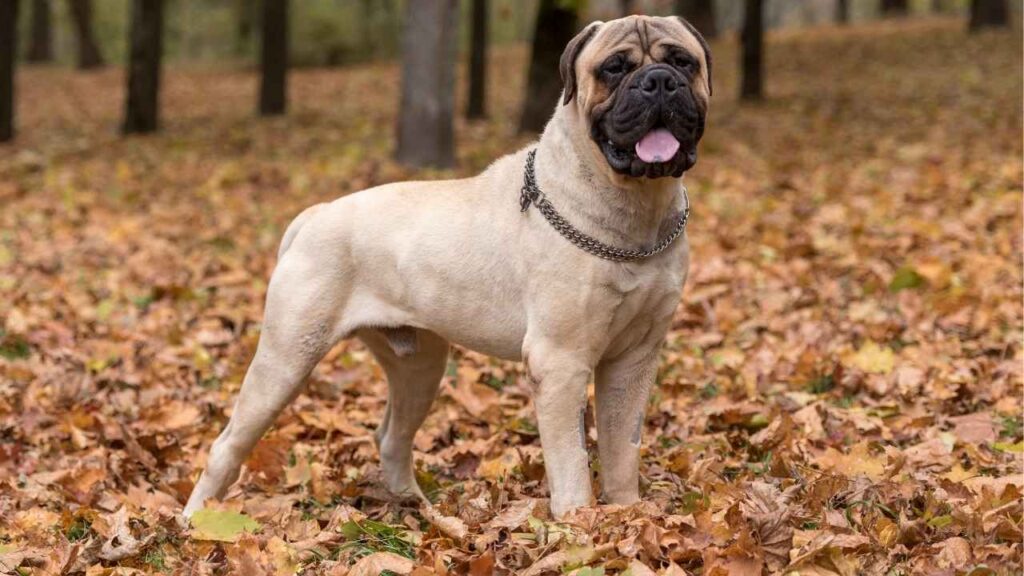
Despite their intimidating presence, Mastiffs are affectionate with their families and often gentle with other pets, especially when raised together. Though tolerant with children, their sheer size makes supervision essential around small kids to avoid accidental knocks. With proper training, Mastiffs become loyal, reserved companions with a heart of gold.
Life Expectancy and Longevity
The great St Bernards have a life expectancy of 8–10 years, which is typical for giant breeds. While they’re often healthy, they are predisposed to several breed-specific health issues like hip dysplasia, osteosarcoma (bone cancer), lymphoma, and cervical vertebral instability (wobbler syndrome). They’re also at high risk for bloat and gastric dilatation-volvulus (GDV) due to their deep chest anatomy, states PetMD.

Entropion, a painful eyelid condition, is also common and may require corrective surgery. Regular check-ups and responsible breeding practices—like PennHIP screening—can help reduce risks and improve quality of life.
Mastiffs tend to have a slightly shorter lifespan, averaging 6–10 years. Like Saint Bernards, they are prone to hip and elbow dysplasia and bloat/GDV. They are also at risk for progressive diseases such as degenerative myelopathy and epilepsy, states PetMD.
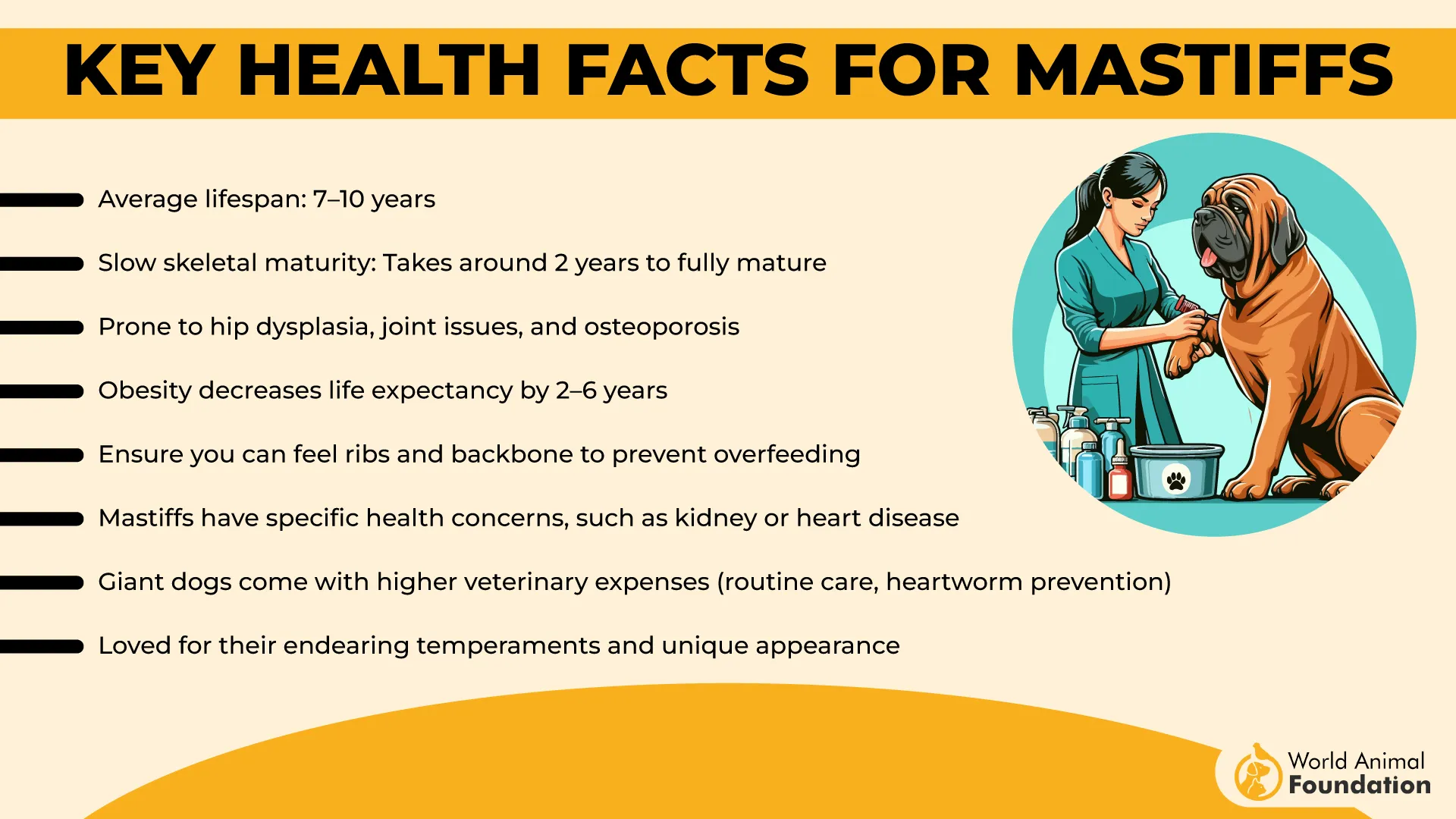
Allergies, various forms of cancer (including osteosarcoma, mast cell tumors, and lymphoma), and eye issues like ectropion, cataracts, and PRA (progressive retinal atrophy) are also common. Genetic testing, regular veterinary care, proper diet, and moderate exercise can play a key role in managing their overall health.
Coat Care and Grooming Requirements
Saint Bernards, whether long-haired or short-haired, require consistent grooming routines to keep their thick coats clean and tangle-free. Weekly brushing is typically enough, but during shedding seasons in spring and fall, daily grooming becomes necessary to manage the heavy hair loss. Mats and tangles should be worked out with a slicker brush or metal comb, and occasional baths help keep the dog fresh.
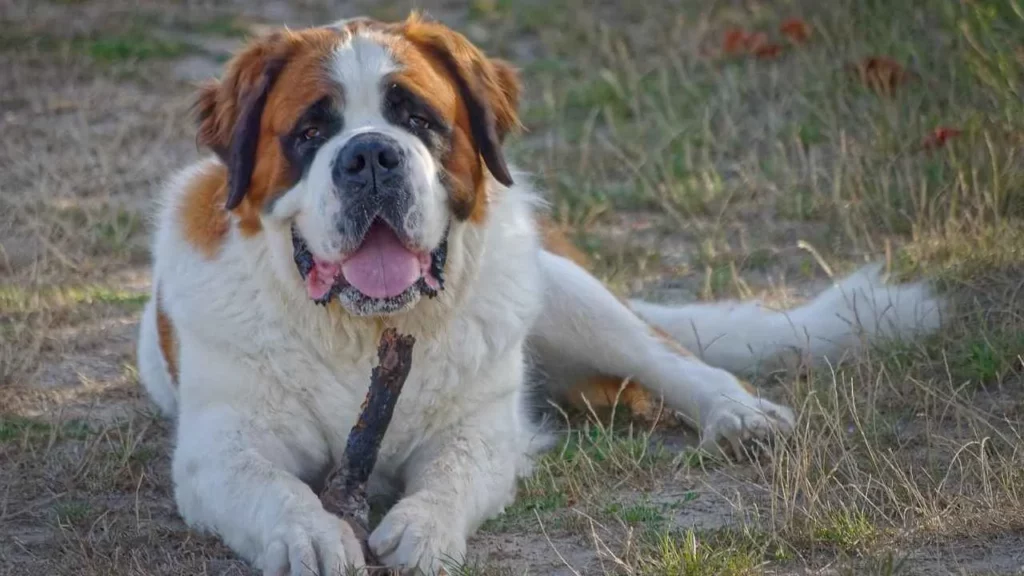
Their ears need weekly checks for wax buildup, nails should be trimmed every few weeks, and fleas and ticks must be kept in check. Due to their limited heat tolerance, grooming should be paired with careful climate management.
As noted by WebMD, grooming Mastiffs is easier, thanks to their short, dense double coats. A quick brushing every few days usually suffices, except during seasonal shedding when a strong-toothed comb can help remove loose fur. Regular cleaning of their facial wrinkles, ears, and eyes is essential to prevent infections, and drool management is part of daily life for dog owners.
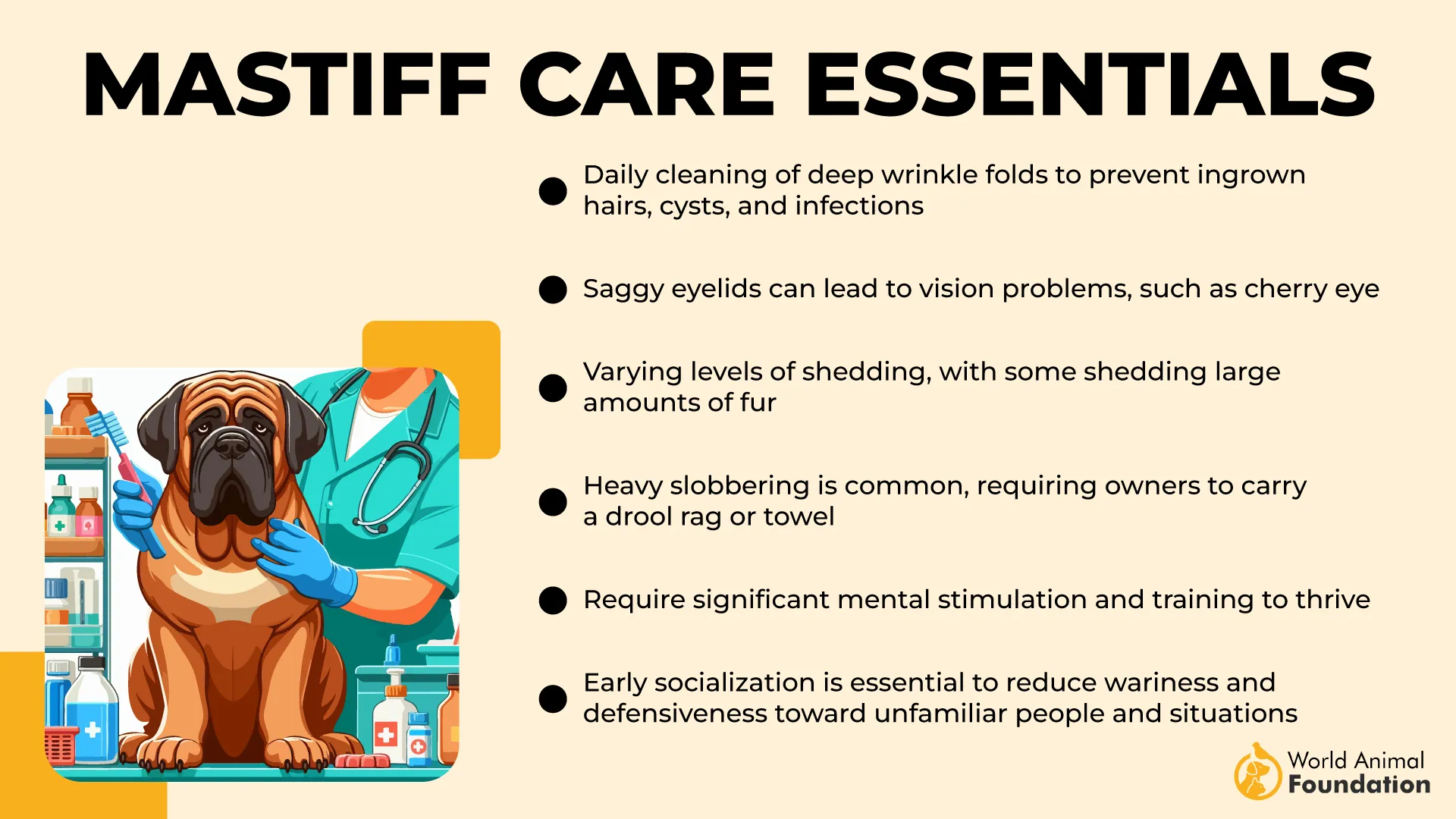
Nail trimming and daily tooth brushing are also recommended. While they don’t require intense exercise, light daily walks prevent obesity and support their physical well-being, always with care to avoid overexertion, especially in puppies and warm weather.
Drooling Tendencies and Cleanliness
Both Saint Bernards and Mastiffs are infamous for their heavy drooling, making them less ideal for meticulous pet owners. Saint Bernards, in particular, tend to drool excessively—especially in warm weather—leaving behind saliva on floors, clothing, furniture, and even walls.

Their jowly mouths produce more drool as temperatures rise, which is why air-conditioned living spaces and cool transportation are essential to keep them comfortable and avoid overheating. Prospective owners should be prepared for constant cleanup and the unavoidable mess that comes with owning this friendly giant.
Similarly, Mastiffs are prolific droolers, with thick, hanging jowls that drip saliva throughout the day. Owners often keep rags or wipes within arm’s reach to clean up their dog’s face, their clothing, and any surfaces that catch the splatter.
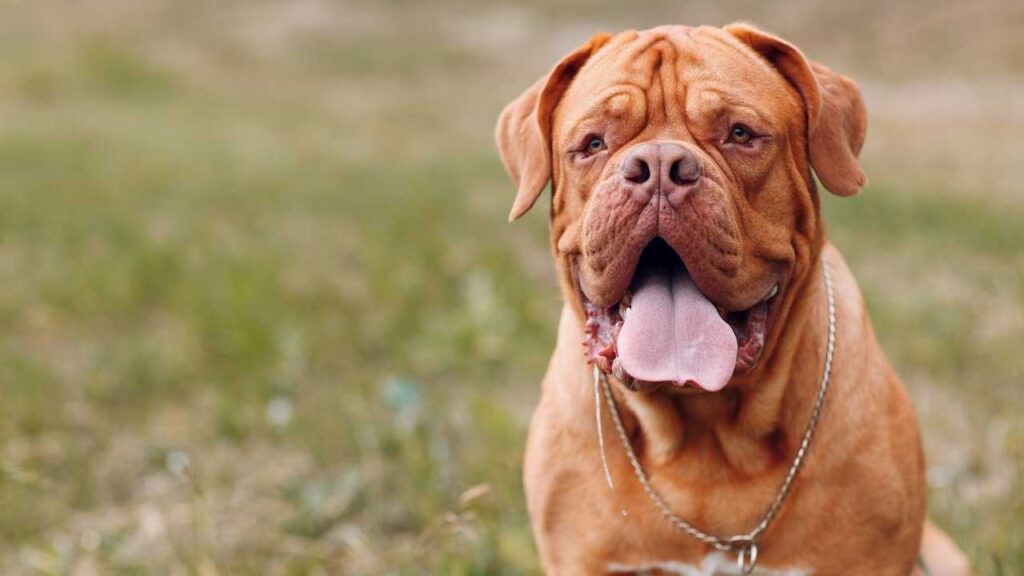
While grooming itself is fairly simple with their short coats, maintaining cleanliness around a Mastiff involves staying on top of the perpetual drool. Both breeds are loving and calm, but potential owners must be comfortable with a less-than-pristine home environment to fully enjoy life with these slobbery companions.
Conclusion
Choosing between the Saint Bernard and the Mastiff comes down to careful consideration of your lifestyle, experience, and household needs. Both breeds are deeply rooted in history—Saint Bernards with their legendary rescue missions at the Bernard Pass and Mastiffs as powerful war dogs used to guard estates in medieval Europe. While Saint Bernards shine with their friendly nature and keen sense of empathy, Mastiffs are known for their calm loyalty and protective instincts.
Whichever breed you lean toward, they must be socialized early, introduced to obedience classes, and provided with proper leash training from an early age. These are not smaller breeds—they thrive best with experienced dog owners who understand the needs of giant, active dogs.
Chew toys, mental stimulation, and companionship from the whole family are key to keeping them happy. While other breeds may demand less space and maintenance, the unique qualities of these two breeds make them stand out in dog shows and as beloved guardians of both people and livestock. For dog owners ready for a giant commitment, either breed can be the right one with the right care.


